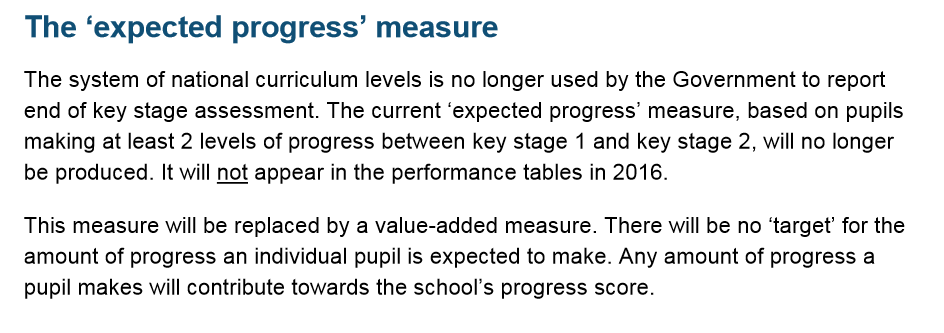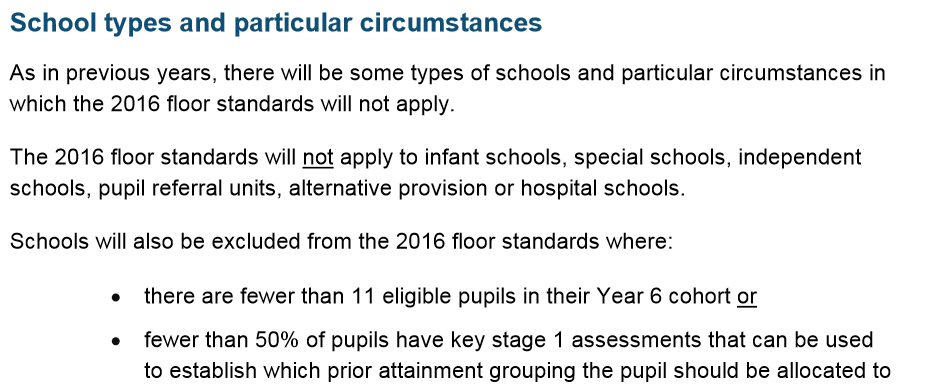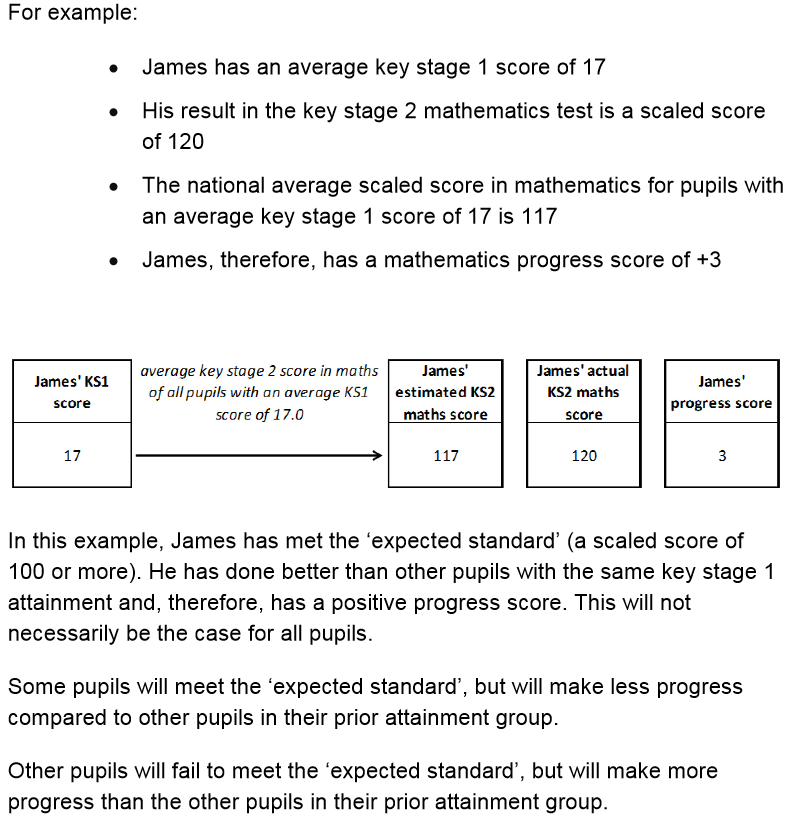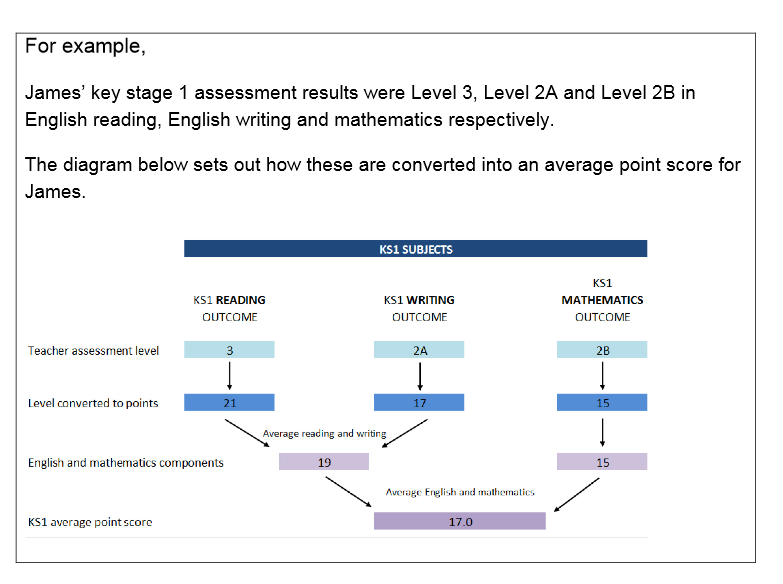The Department for Education has today published more information about its new accountability measures for primary schools, due to be brought in this year.
The document, essentially, explains more about these measures – including how schools’ progress scores will be calculated for this year only.
We’ve got the main points here:
First of all:
The headline measures for 2016 primary performance tables will be:
– the percentage of pupils achieving the “expected standard” in reading, writing and maths at the end of key stage 2
– the pupils’ average scaled score in reading and maths
– the percentage of pupils who achieve at a high standard in reading, writing and maths
– the pupils’ average progress in the three areas
The “expected progress” measure based on 2 levels of progress will no longer exist
But what’s the new floor standard (we hear you ask)?*
*You’ll see the phrase “expected standard” above. The department has said that because this is the first year of the new accountability measures and tests, it will have to wait and see how pupils have done in the tests before they can set “minimum expectations”.
This mean the department will announce what scores a school needs in each subject, in order to meet the floor standard, after the tests have been taken.
The report does add: “In future years, we will be able to say what the minimum requirement will be in advance of assessments taking place.”
It’s important to note the floor standards don’t apply to all schools.
But how are the progress scores going to be worked out? Well, the DfE has put together this little diagram for you:
Each school will get a ‘positive’ or ‘negative’ overall progress score
How schools work out their progress scores is described in the document, and is already being much-discussed in primary schools, but the key things to know are:
– A score of 0 means schools, on average, do about as well at key stage 2 as those with similar prior attainment nationally.
– A positive score meas pupils do on average better at key stage 2 than those with similar prior attainment.
– A negative score means pupils on average do worse than similar pupils elsewhere – but this will not necessarily mean a school is below the floor.
Explainer:
The DfE has also explained how progress scores where pupils’ prior attainment was based on levels will be worked out.
Basically there will be a points system. It’s quite complicated, but those helpful chaps at the DfE have drawn a lovely diagram. Here it is:
Confused? It’s certainly not simple. And we haven’t even got into ‘scaled scores’. For more on those, definitely check out the whole document.
Ultimately, this extra information will be welcomed by primary teachers but the conclusion still seems to be:
So much still to be worked out. It's a horrible mess. pic.twitter.com/WtpEkhffCt
— Rachel Gooch (@SchoolDuggery) January 29, 2016















Your thoughts